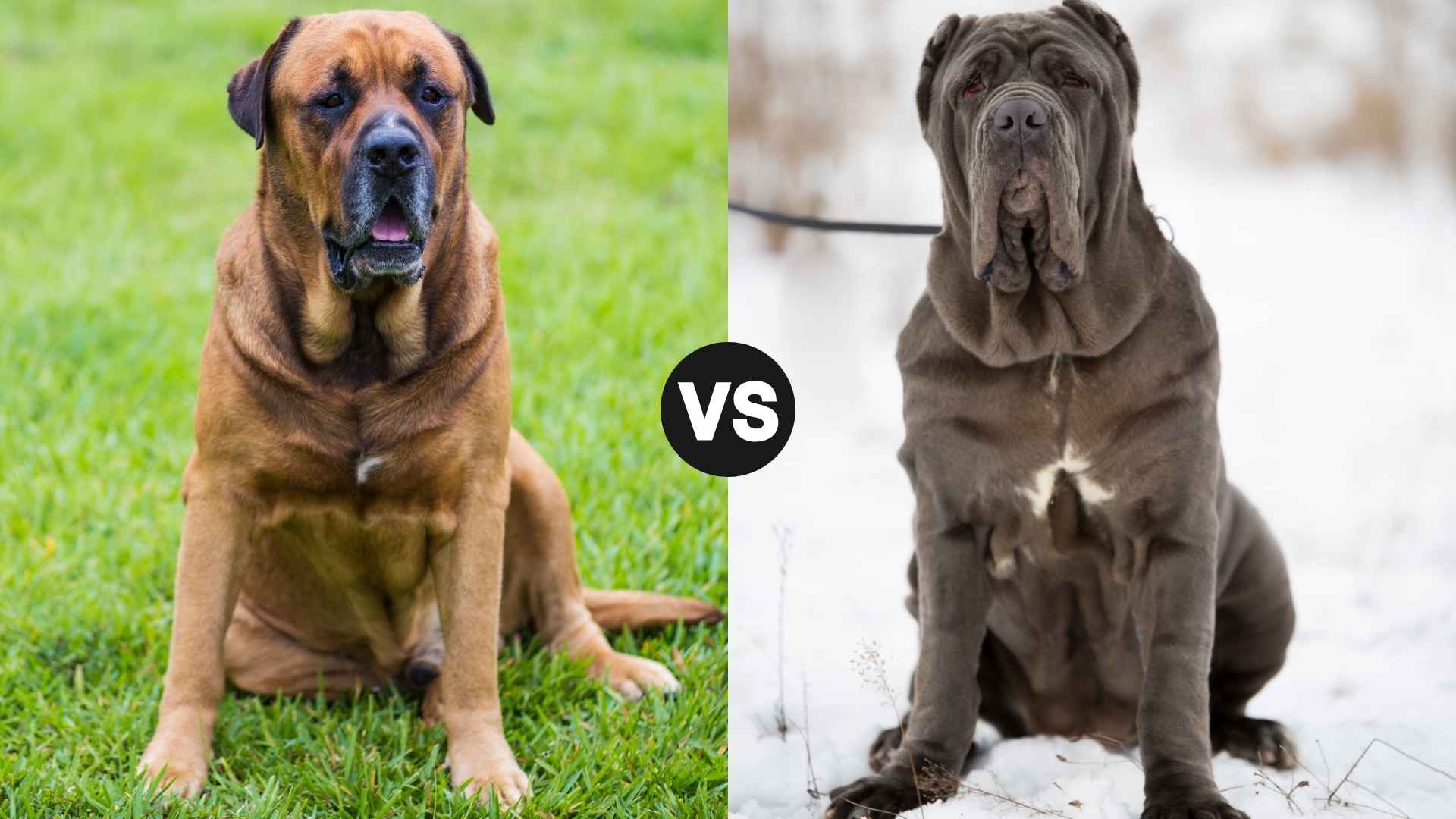If you’re a fan of big dogs with even bigger hearts, you’re going to love this comparison. The English Mastiff and the Neapolitan Mastiff are two of the most iconic members of the gentle giant club. With their massive frames, droopy jowls, and calm, watchful nature, these pups are adored by giant breed lovers around the world.
While they may look intimidating at first glance, both breeds are known for being sweet, loyal, and surprisingly low-energy dogs for their size. But don’t let those gentle eyes fool you—owning a giant breed dog is no small feat. These dogs come with a big dose of responsibility and aren’t the best match for every family.
In this guide, we’ll walk you through Mastiff vs Neapolitan Mastiff in detail, comparing everything from temperament and appearance to care needs and lifestyle compatibility so you can choose the gentle giant that’s right for you. Let’s dive in!
English Mastiff vs. Neapolitan Mastiff
English Mastiff vs Neapolitan Mastiff is a matchup of two legendary giants with ancient roots and noble histories. The English Mastiff, one of the oldest and most iconic working dog breeds, has served as a guard and fighting dog for over 2,000 years.
With origins tracing back to 3000 BCE and connections to the ancient Molossian dogs, Mastiffs were once Roman arena gladiators battling wild beasts and warriors alike. Today, they’re known for their calm demeanor, loyal heart, and impressive size—true gentle giants with a legacy of strength and protection, states Britannica.
The Neapolitan Mastiff, or Mastino, shares a similar background as a war dog of ancient Rome but offers a more striking visual presence. With deep wrinkles, loose skin, and an intimidating gaze, the Mastino was purposefully bred to look “ugly” to scare off intruders.
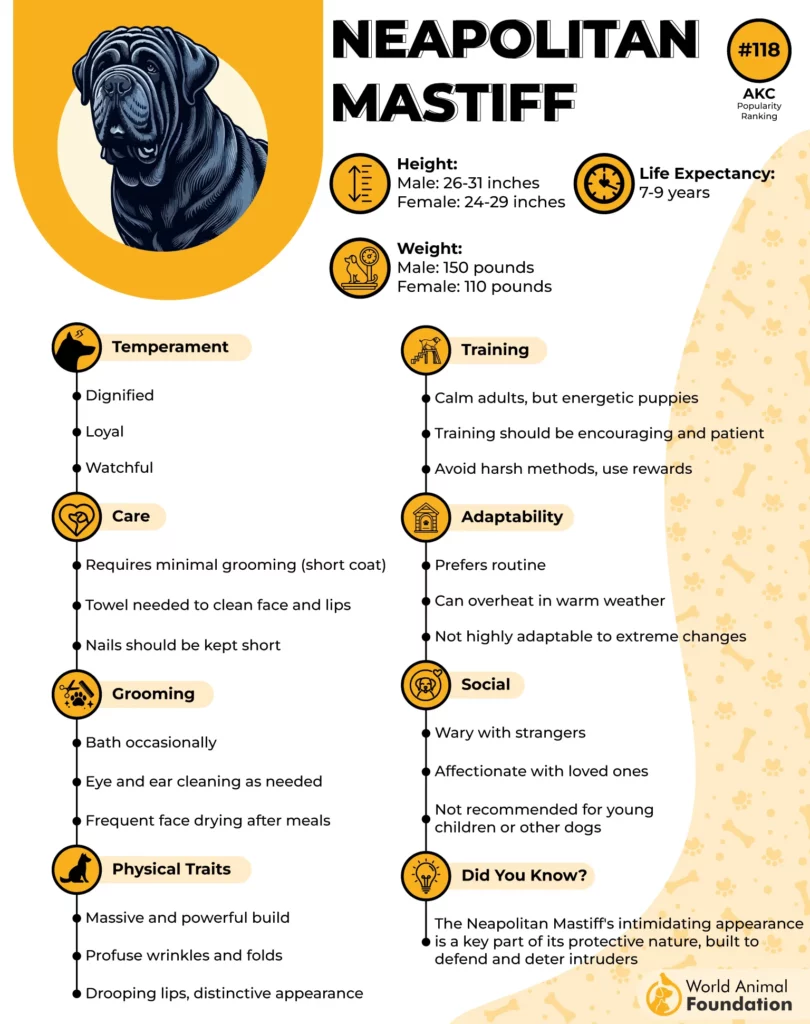
Despite their large size and fearsome appearance, Neapolitan Mastiffs are steady, sweet, and loyal to their families. Once guardians of Italian estates and Roman battlegrounds, they now find happiness as affectionate, laid-back companions at home.
Appearance and Distinctive Features
The English Mastiff is a giant among dogs, both in size and stature. Males typically stand at least 30 inches tall and can weigh up to a staggering 230 pounds, while females are slightly smaller. With a broad, rectangular body, thick muscles, and a deep chest that drops to the elbows, their appearance exudes power and nobility.
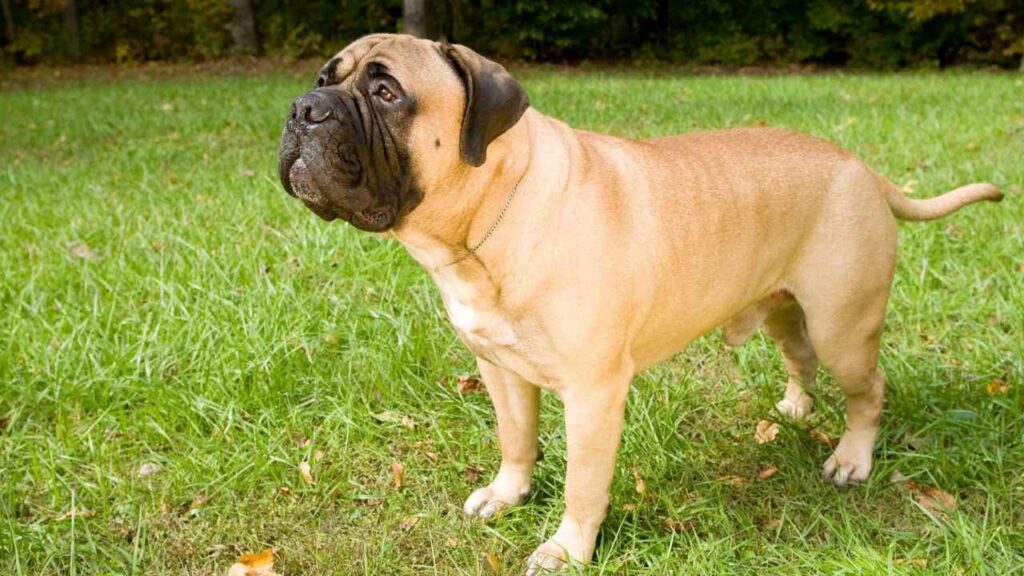
Their massive heads are supported by sturdy necks, featuring short muzzles, a distinct black mask, and small, V-shaped ears that hang close to the cheeks. Mastiffs sport a short double coat in fawn, apricot, or brindle shades, paired with soulful dark brown eyes and a dignified, but slightly clumsy gait that many find charming.
In contrast, the Neapolitan Mastiff (or Mastino) is known for its jaw-dropping, almost prehistoric appearance. While slightly shorter than English Mastiffs, males still reach up to 31 inches and weigh around 150 pounds. What sets them apart is their loose, heavily wrinkled skin and dramatically drooping facial folds, designed to intimidate intruders.
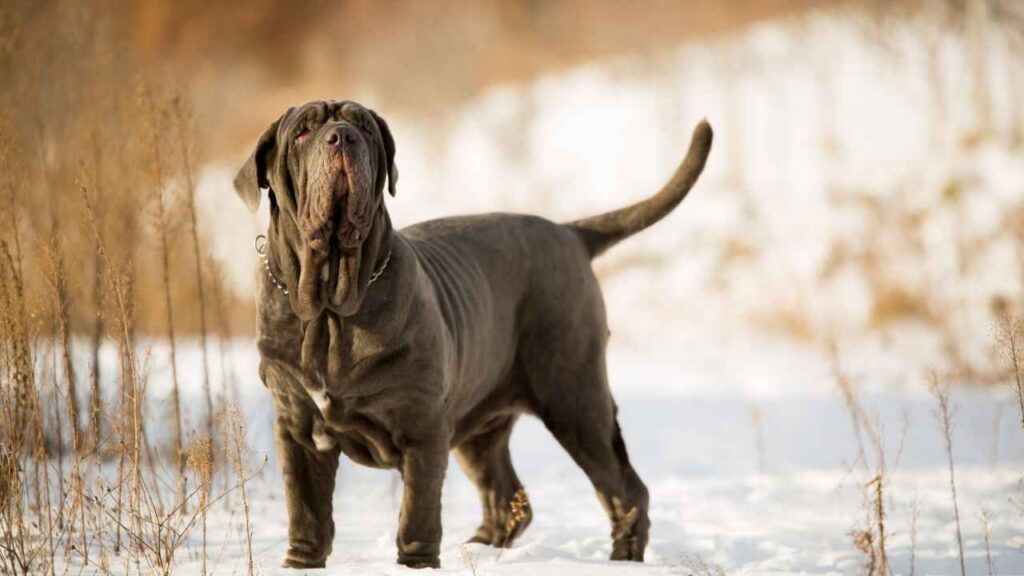
Their rectangular bodies, deep chests, and heavy bone structure give them a lumbering, slow movement. The Mastino’s short, smooth coat can be black, blue, tawny, or mahogany, and its massive head is accented by pendulous lips and an “astounding” expression that’s unforgettable.
Temperament and Behavior
The English Mastiff is the epitome of a gentle giant—calm, affectionate, and deeply loyal to its family. Despite their imposing size, these dogs are surprisingly patient and laid-back, making them suitable companions for households with older children and other pets. They are generally friendly with familiar faces but remain instinctively cautious around strangers due to their centuries-old guarding instincts.
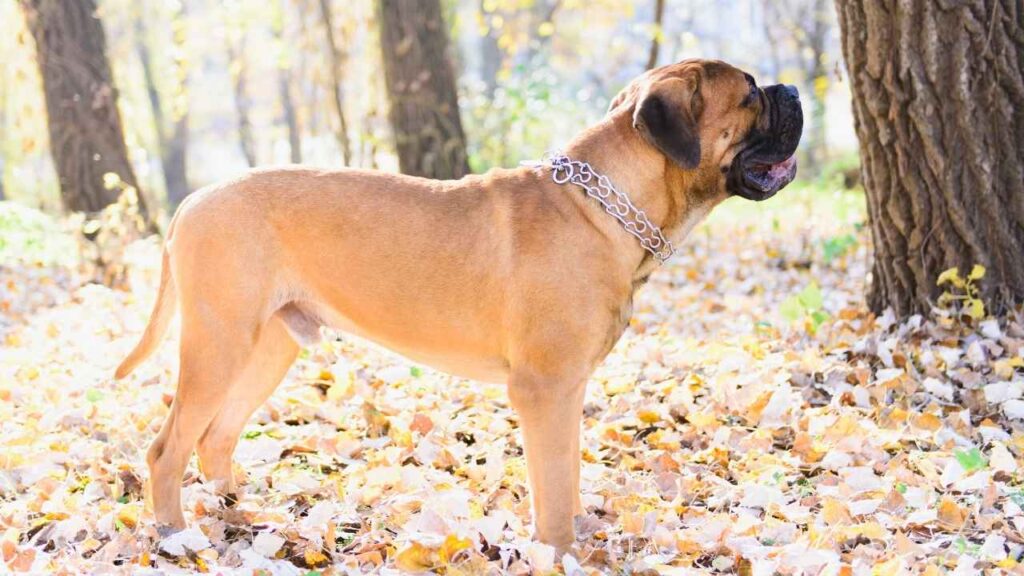
While their play sessions are short and their energy levels low, they thrive on human interaction and may even try to climb into your lap for a cuddle. However, early obedience training and early socialization are essential to shape their natural wariness into well-balanced behavior.
WebMD states the Neapolitan Mastiff is a calm and devoted guardian who makes a great watchdog. These massive dogs are happiest lounging around the home or soaking up the sun in the backyard. Though they form strong bonds with their family members, they tend to be reserved around strangers—traits rooted in their history as estate protectors.
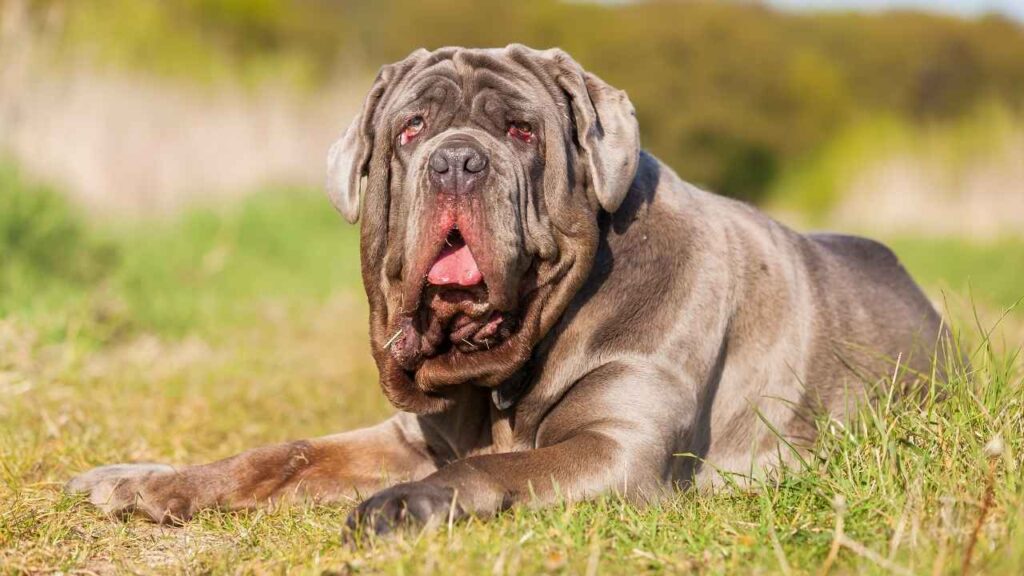
Their temperament is mellow, almost cat-like, and they require consistent socialization and mental stimulation to ensure they remain friendly and confident in new environments. With the right upbringing, a Neapolitan Mastiff is a sweet, loyal companion who just happens to look like a living fortress.
Training and Physical Activity
English Mastiffs have relatively low exercise requirements for their size and can even adapt to apartment living as long as they get daily walks and free playtime. Adults typically do well with a mile or two of walking per day. Still, owners must take care with growing puppies, limiting activity to short, gentle walks and avoiding stairs or jumping to prevent joint injuries.
Known for their stubborn streak, Mastiffs may lie down mid-walk if they become tired or overheated. Training should begin early, focusing on short, fun sessions with positive reinforcement. They respond best to gentle handling, eye contact, and praise, as harsh corrections can damage their sensitive nature.

Neapolitan Mastiffs, or Mastinos, are also low-energy dogs as adults, but can be surprisingly energetic and playful during puppyhood. It’s essential to monitor their activity closely, especially in the first year, to protect their growing joints. Overexertion, especially on stairs or through roughhousing, can lead to injury.
Like their English cousins, Mastinos thrive on short walks and backyard play but overheat easily. Training should begin young to establish boundaries before adolescence sets in, bringing with it a headstrong, powerful personality. Mastinos respond well to patient, reward-based training. Harsh discipline or dominance-based tactics backfire with this breed, which needs a calm, confident owner and consistent guidance.
Nutrition and Dietary Needs
Feeding an English Mastiff requires thoughtful planning due to their massive size and susceptibility to joint issues and bloat. These dogs thrive on high-quality, AAFCO-approved large-breed formulas, with puppies needing large-breed puppy food until they’re around 18–24 months old.
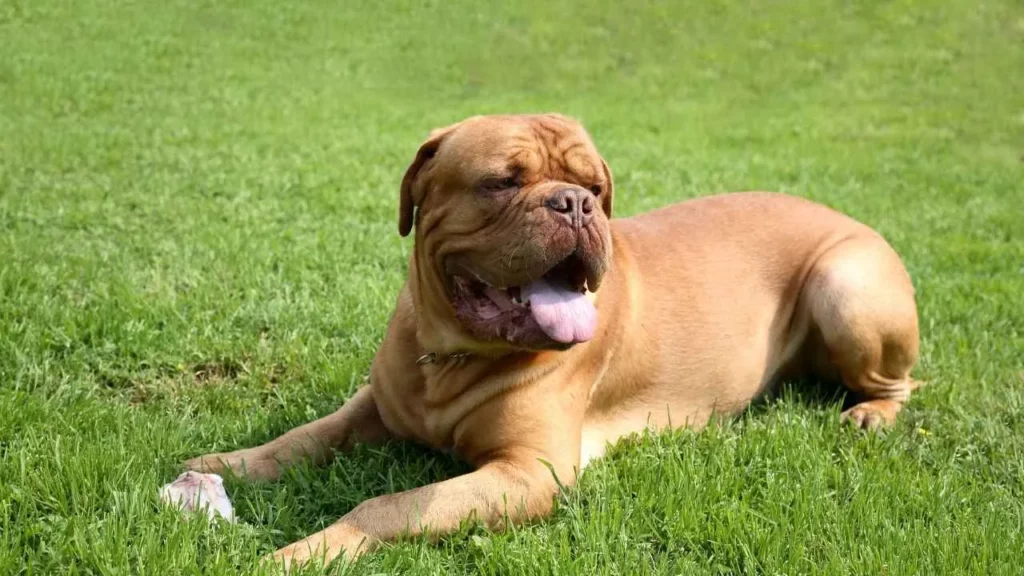
To reduce the risk of gastric dilatation-volvulus (bloat), it’s crucial to feed Mastiffs 2–3 smaller meals daily, avoid exercise near mealtime, and never use elevated food bowls. Due to their heavy frames, Mastiffs often benefit from joint-supportive supplements like glucosamine, chondroitin, and omega-3 fatty acids, especially if they’re prone to hip or elbow dysplasia, states PetMD.
Neapolitan Mastiffs also require a structured feeding routine tailored to their size and lifestyle. Puppies should be fed three to four meals a day on a consistent schedule, while adults do well with two meals daily. Free-feeding is discouraged, as Mastinos can easily overeat and gain excess weight.
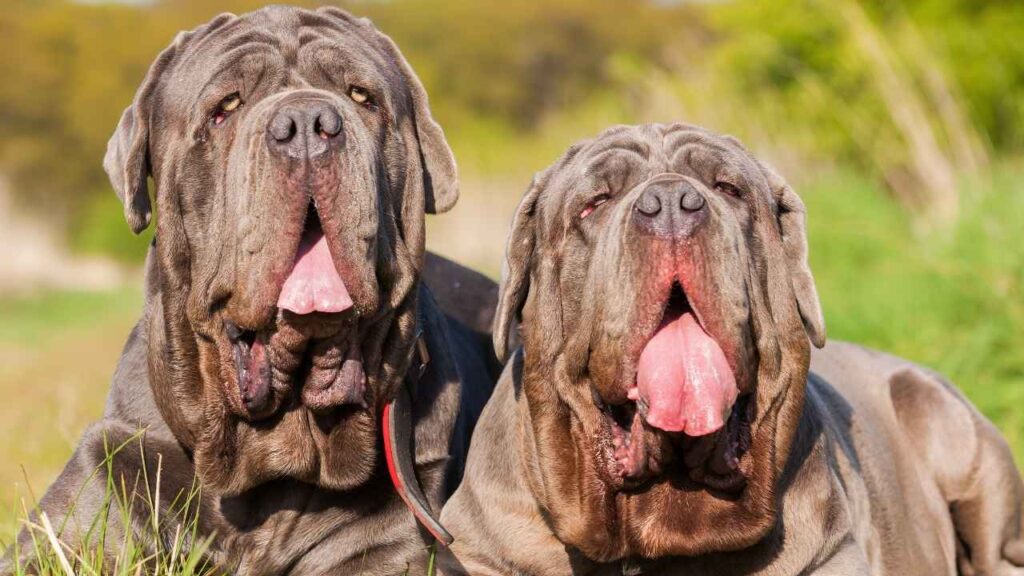
Like English Mastiffs, they are prone to bloat, so meals should be served from floor-level bowls and eaten slowly—slow-feeder bowls can help with this. While a balanced diet often covers their nutritional needs, omega-3s and joint supplements can be valuable additions to support skin health and reduce joint stress in these large, heavy-boned dogs.
Health and Wellness
English Mastiffs have a short lifespan of 6–10 years and are prone to several health issues. Common concerns include hip dysplasia, progressive retinal atrophy, epilepsy, allergies, and cancers like osteosarcoma and lymphoma. Their deep-chested build increases the risk of gastric dilatation-volvulus (bloat), often prevented with gastropexy surgery.
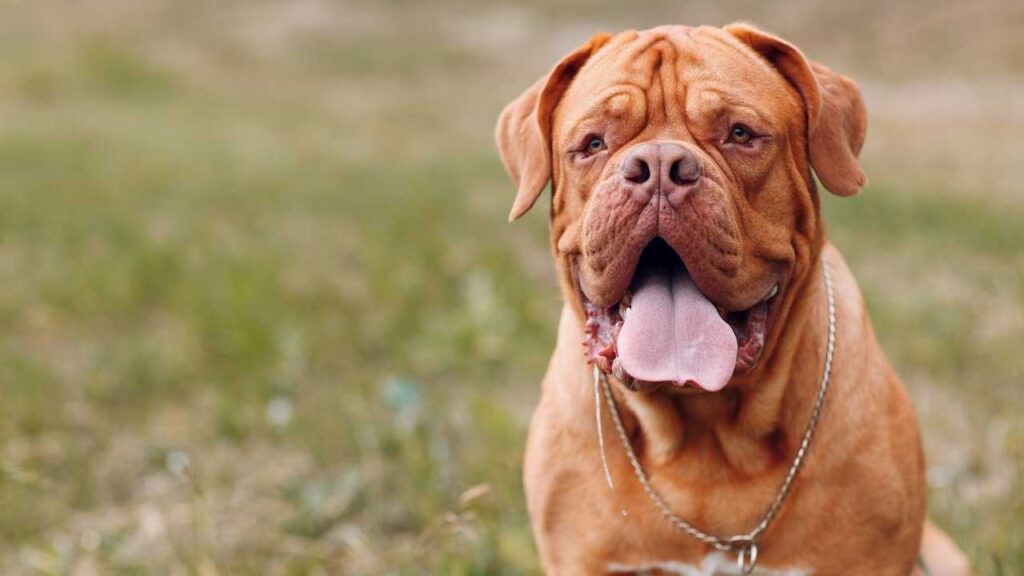
Joint problems are common health issues due to their large size, making regular checkups, a balanced diet, and joint supplements like glucosamine essential. Eye conditions such as entropion and ectropion may also require surgical treatment.
Neapolitan Mastiffs share many similar health concerns, including hip and elbow dysplasia, arthritis, and bloat. Their loose skin makes them vulnerable to infections like skin fold dermatitis and lip-fold pyoderma.
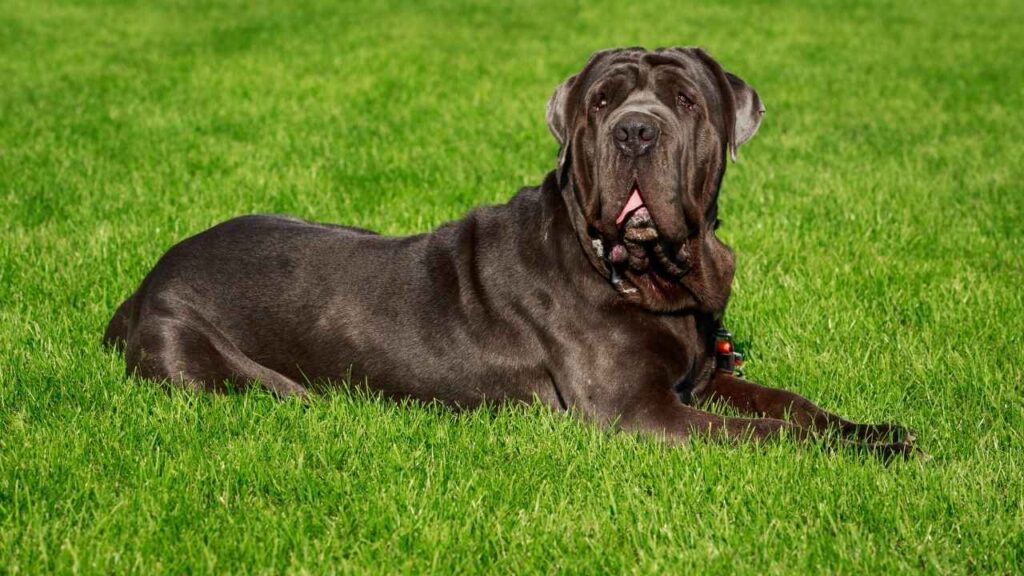
Eye problems such as cherry eye and demodectic mange are frequent, along with heart issues like dilated cardiomyopathy. Regular vet visits, joint and skin care, and maintaining a healthy weight are vital to support their overall well-being.
Coat Care and Grooming
The English Mastiff’s short, dense coat is relatively low-maintenance and benefits from a quick brushing every few days. During seasonal changes, typically once or twice a year, they shed a lot. So, using a strong-toothed comb more frequently can help manage excess hair.
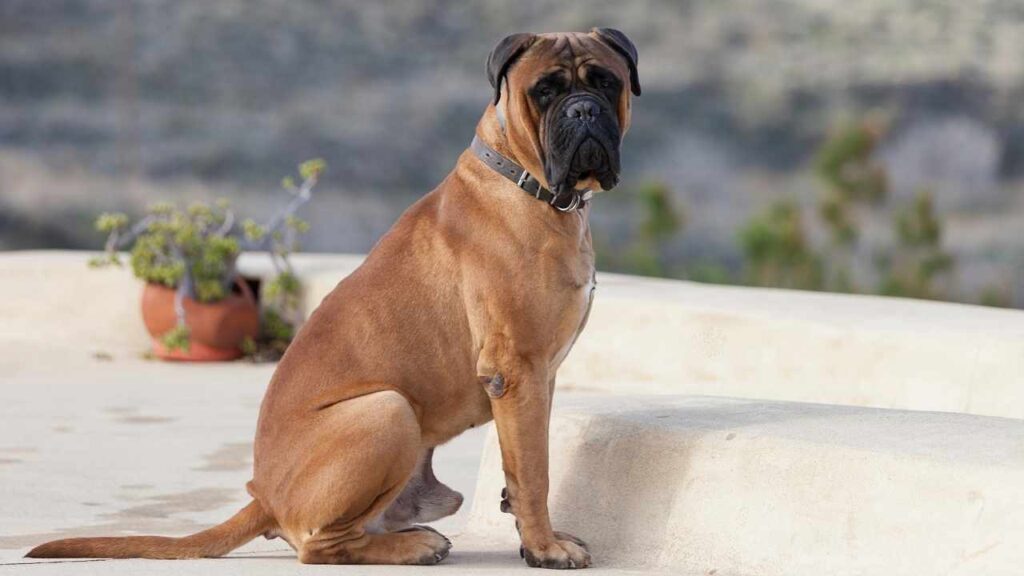
Their facial wrinkles, ears, and eyes require regular cleaning to prevent irritation or infection, and their nails should be trimmed consistently. Due to their tendency to drool, many owners keep towels handy to wipe their Mastiff’s face and keep clothing clean, states the AKC.
Neapolitan Mastiffs have short, smooth coats that require minimal upkeep, with weekly brushing using a bristle or rubber brush during shedding seasons. Bathing is only needed occasionally, but attention to hygiene is critical.
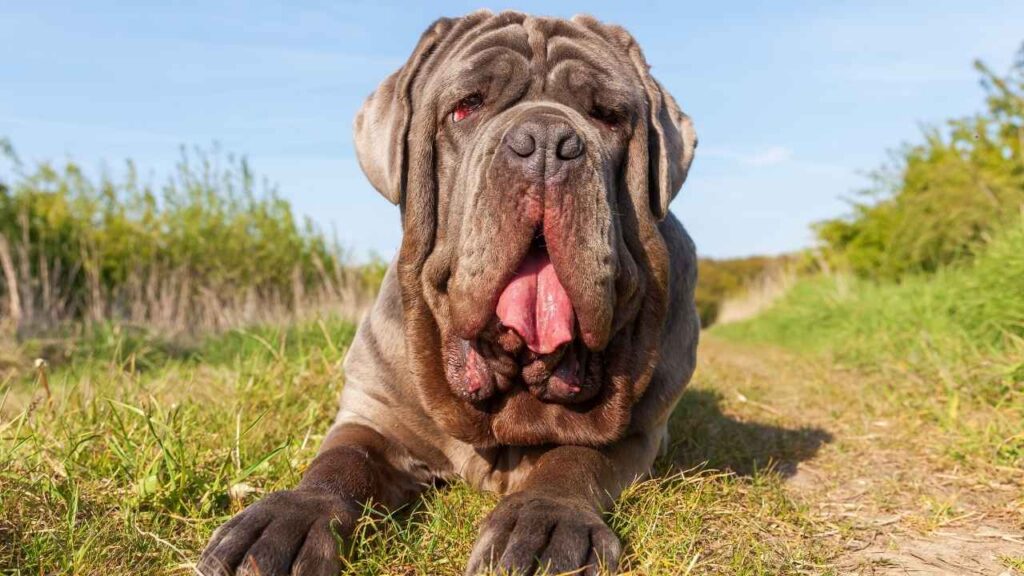
Their deep wrinkles and facial folds must be kept clean and dry to avoid skin infections. Regularly wipe around the eyes, ears, and lips with a damp cloth, especially after meals, and trim nails as needed. Pet parents should keep a towel nearby to manage their constant drooling.
Conclusion
While the English Mastiff and Neapolitan Mastiff share many similarities—from their massive builds to their loyalty as family pets—there are a few key differences that make each breed unique. The English Mastiff tends to be a bit lower maintenance in terms of grooming and has a calmer temperament.
At the same time, the Neapolitan Mastiff’s striking appearance and protective instincts require experienced dog owners who can commit to consistent training and socialization.
Both breeds thrive with daily exercise, positive reinforcement, and early obedience to basic commands. Their large bodies and health concerns mean working with a reputable breeder is crucial to ensure a good quality of life.
Whether you choose one of these two breeds depends on your lifestyle, experience with large dogs, and ability to manage a powerful companion that may not always get along with other animals or other dogs. In the end, either breed can become a well-mannered dog, a loving part of your home, with the right commitment, structure, and care throughout your dog’s life.


